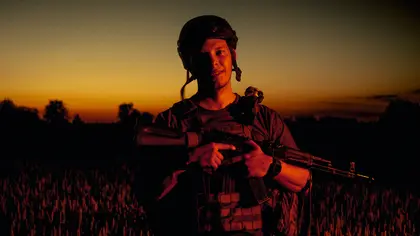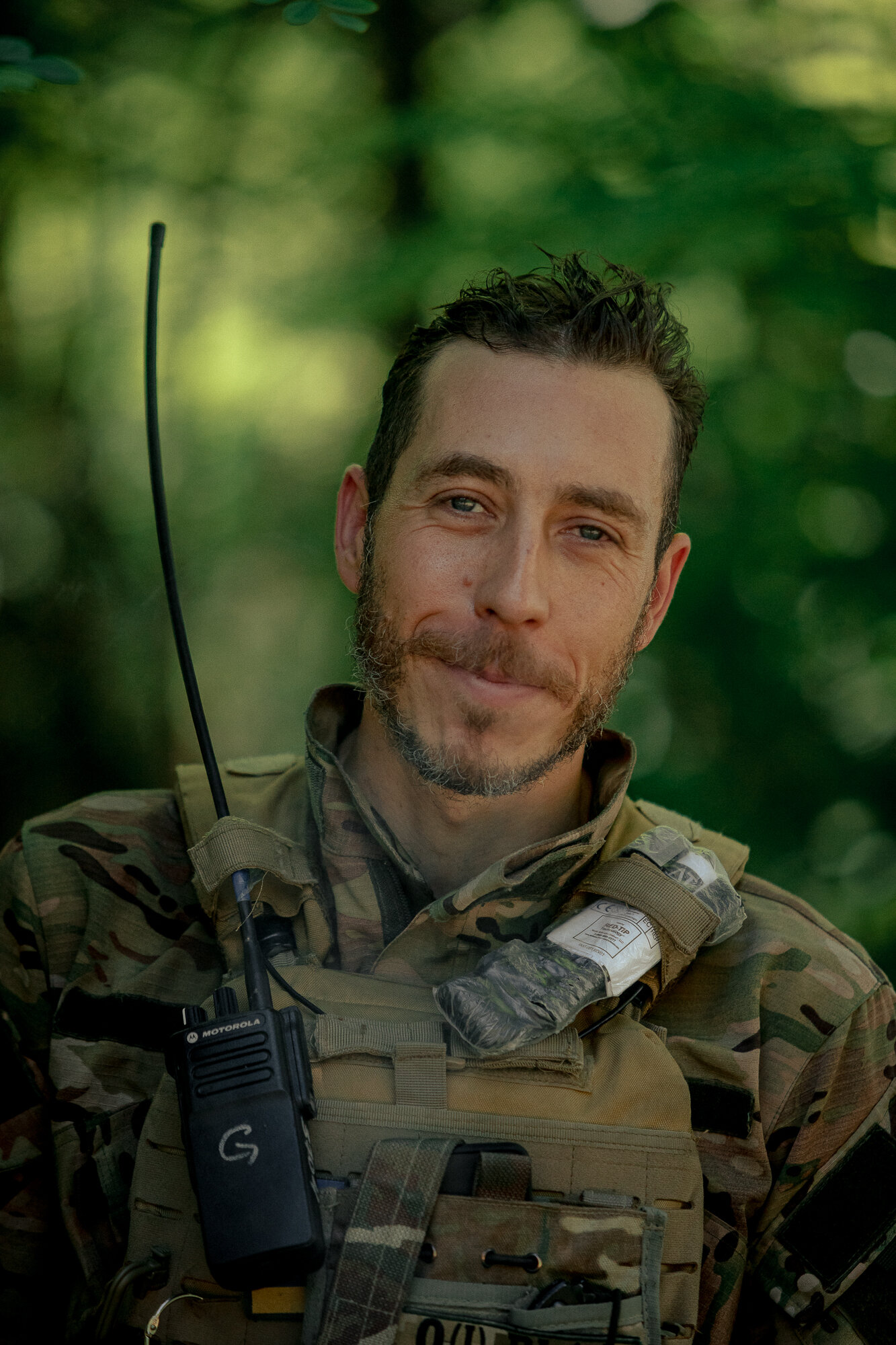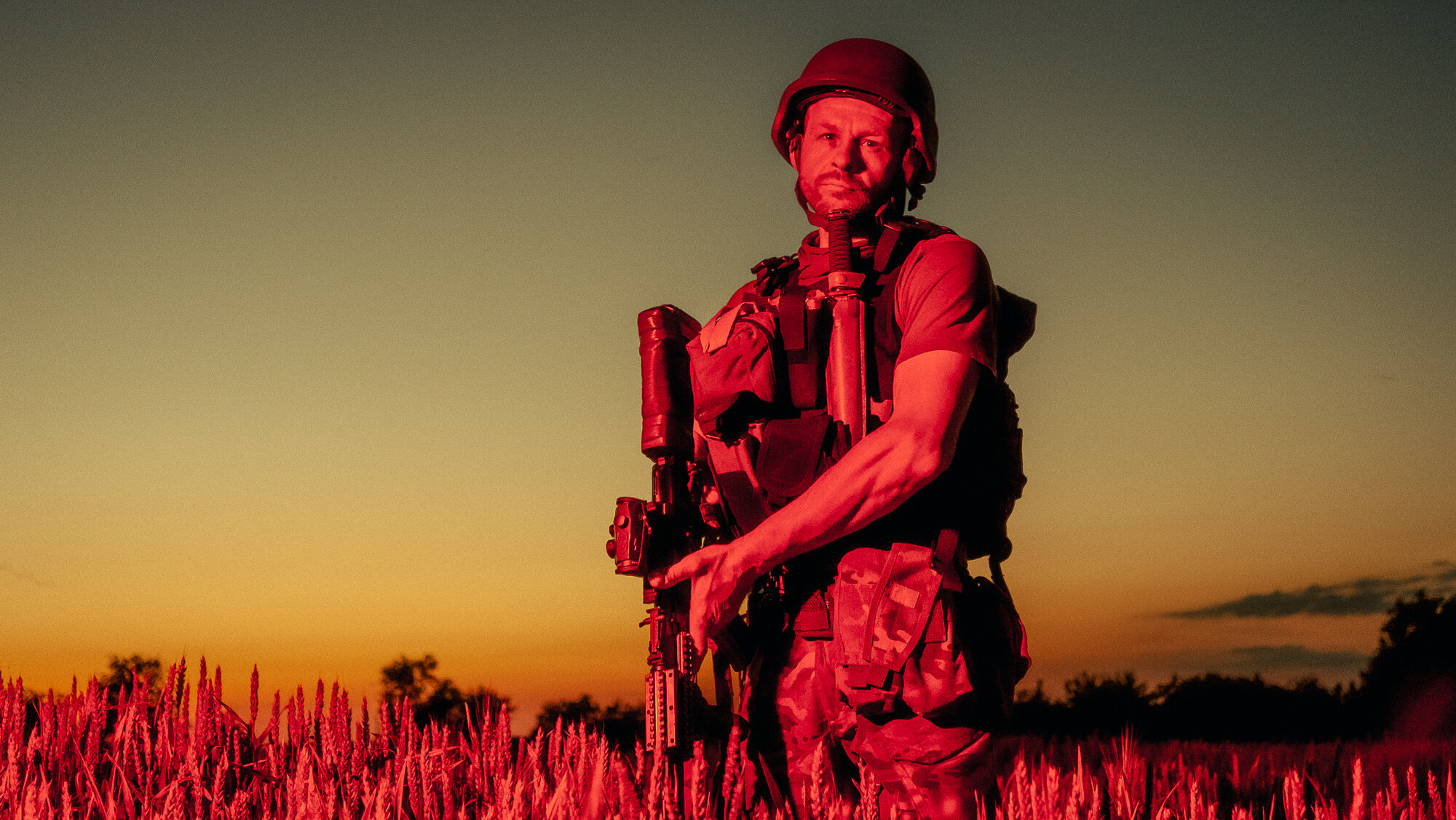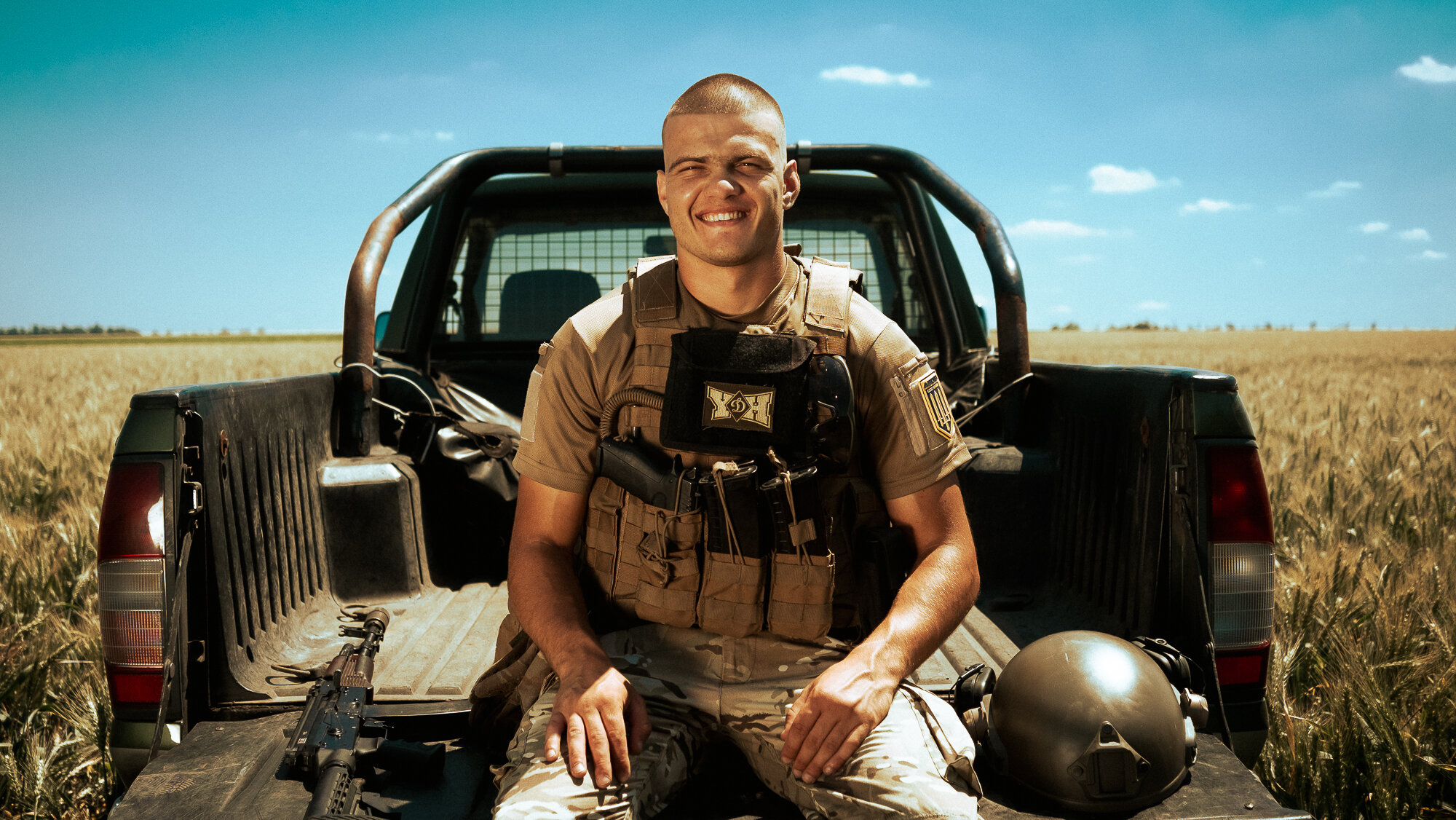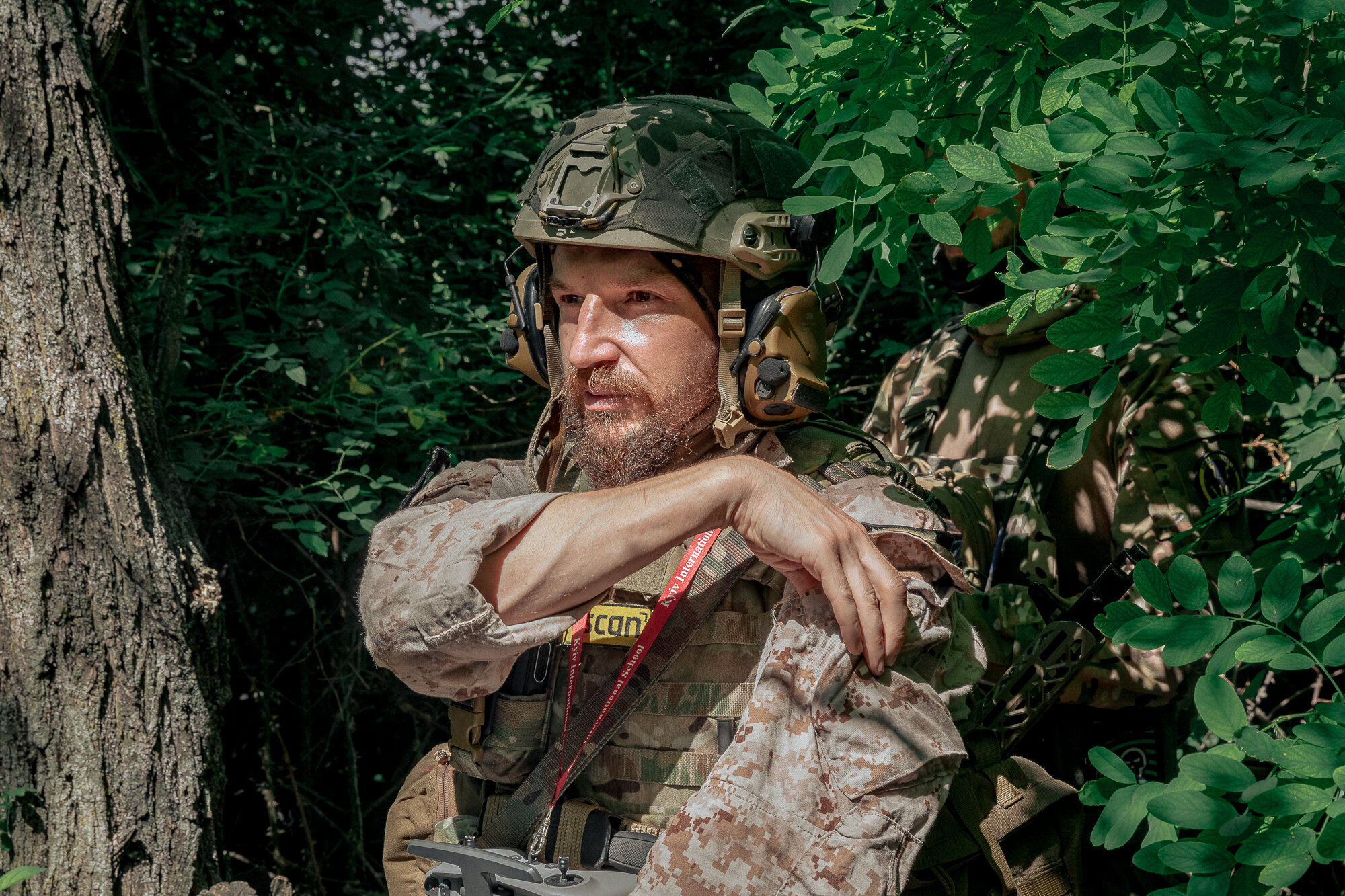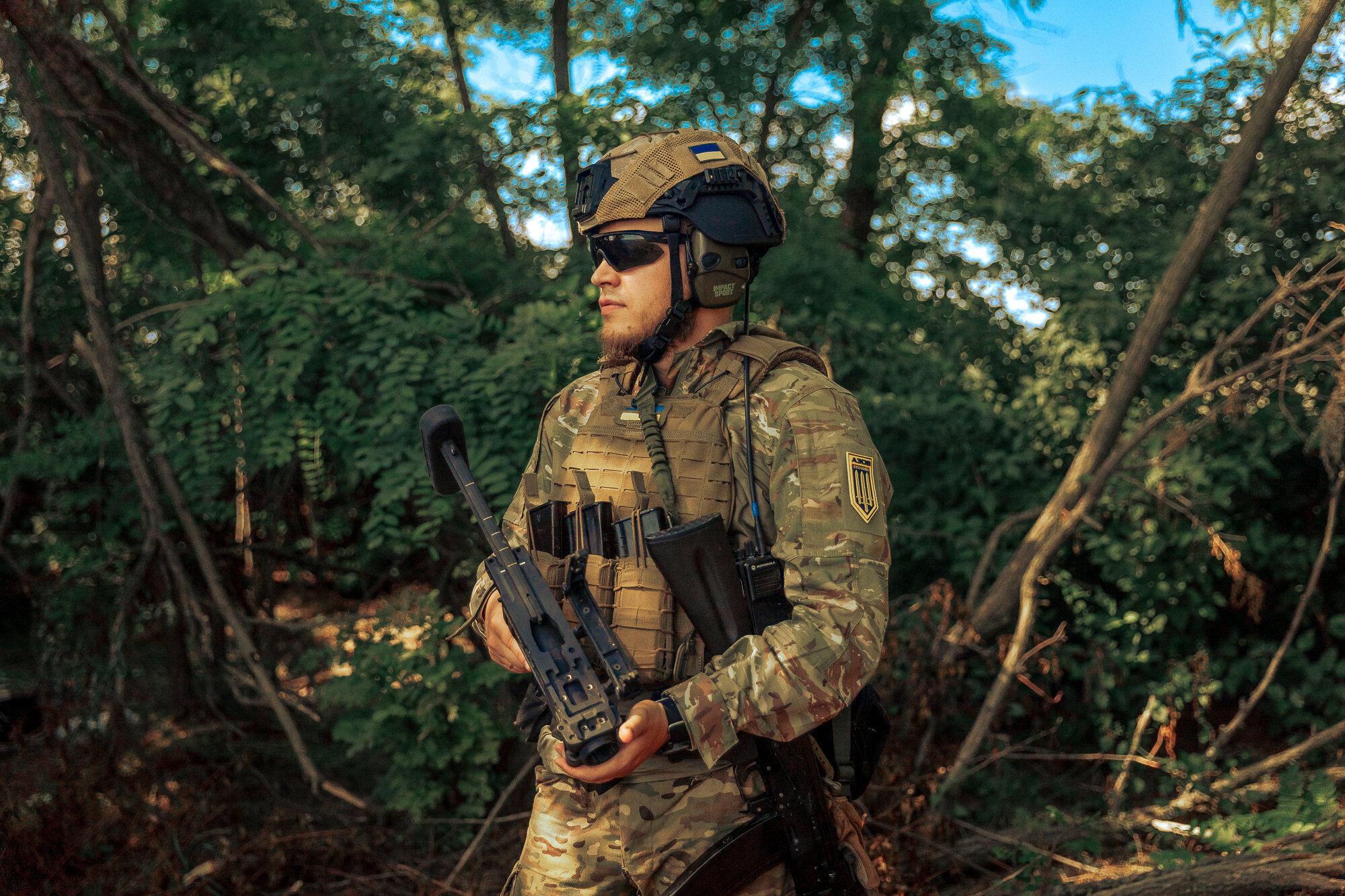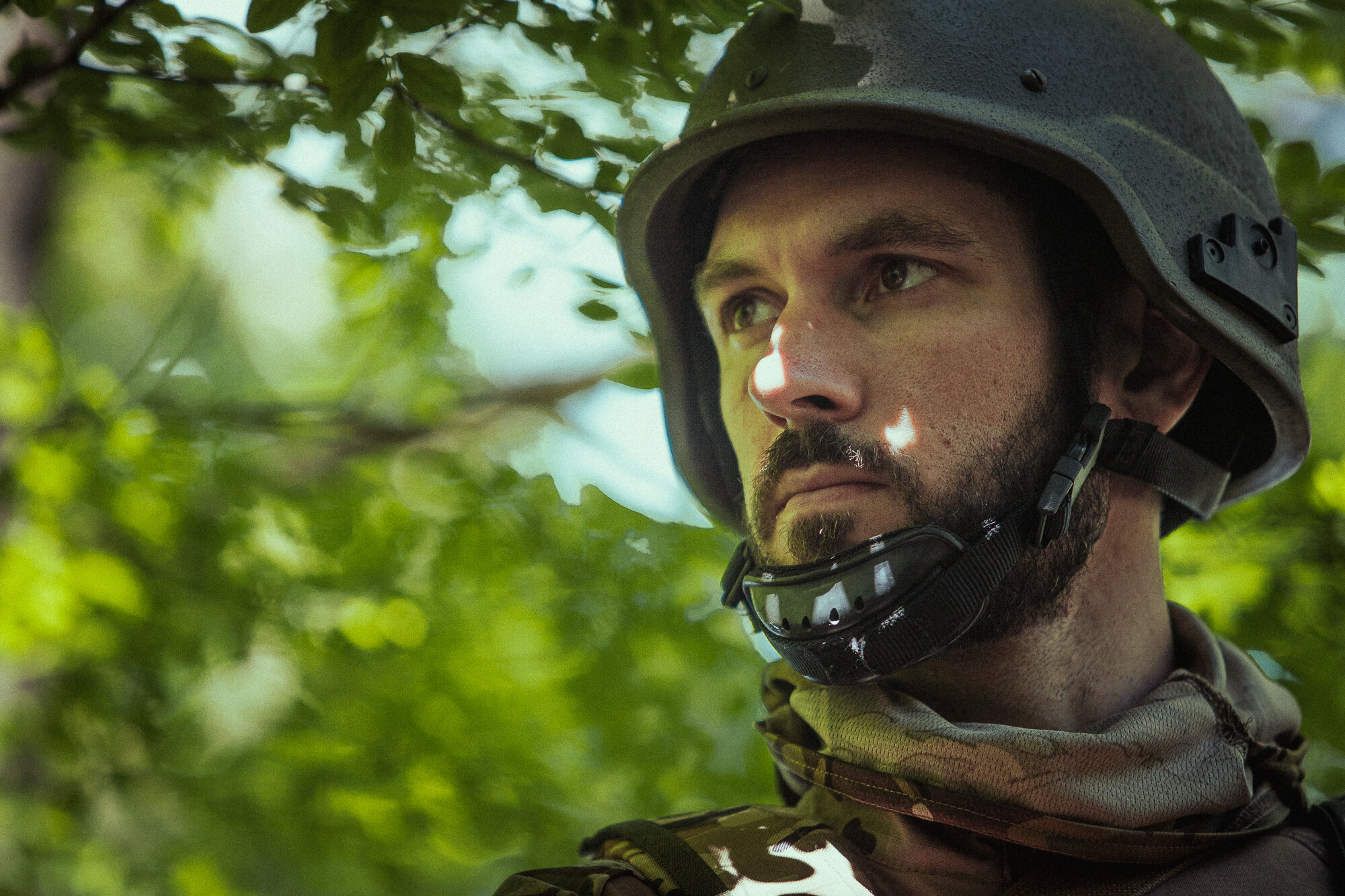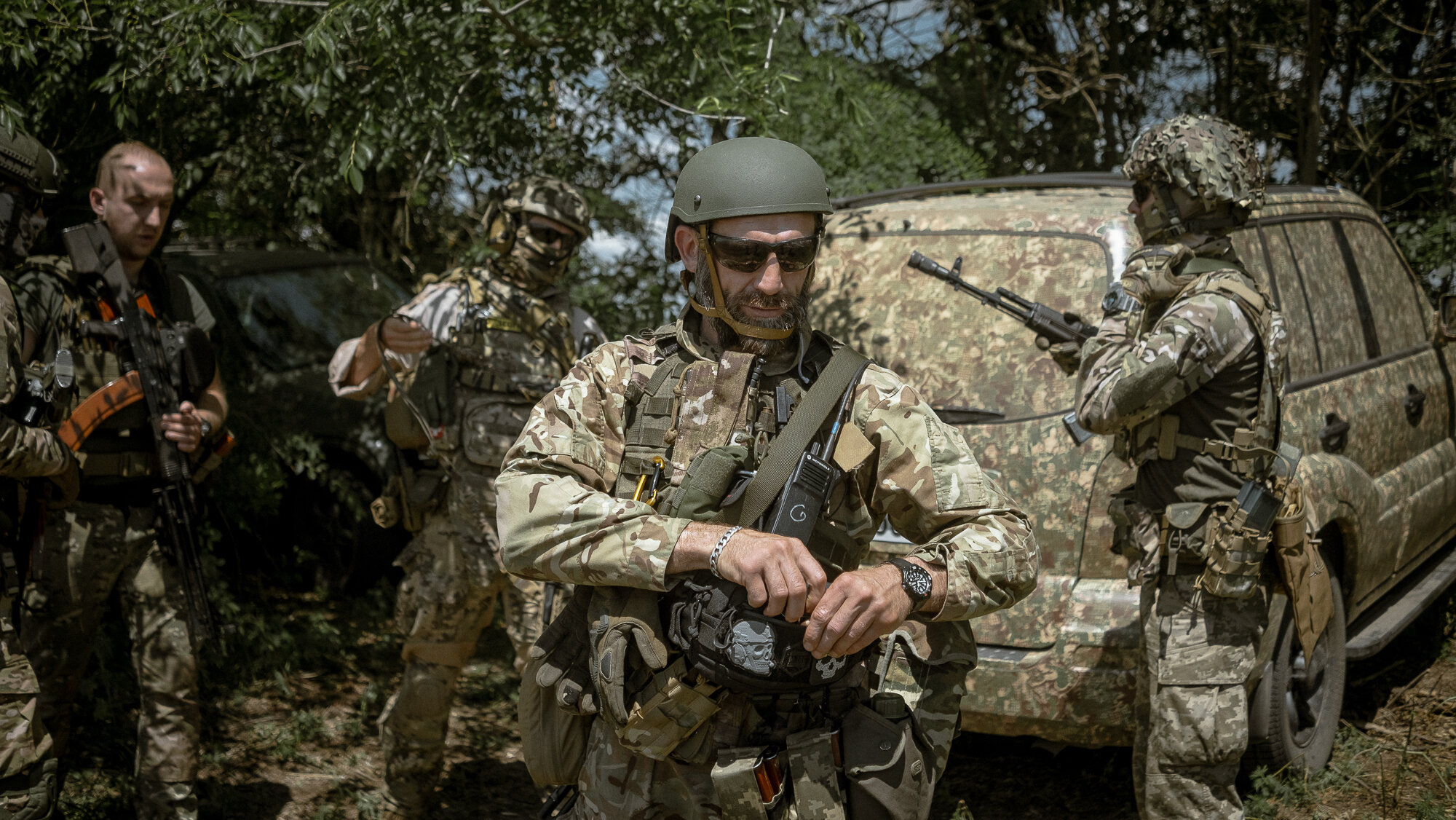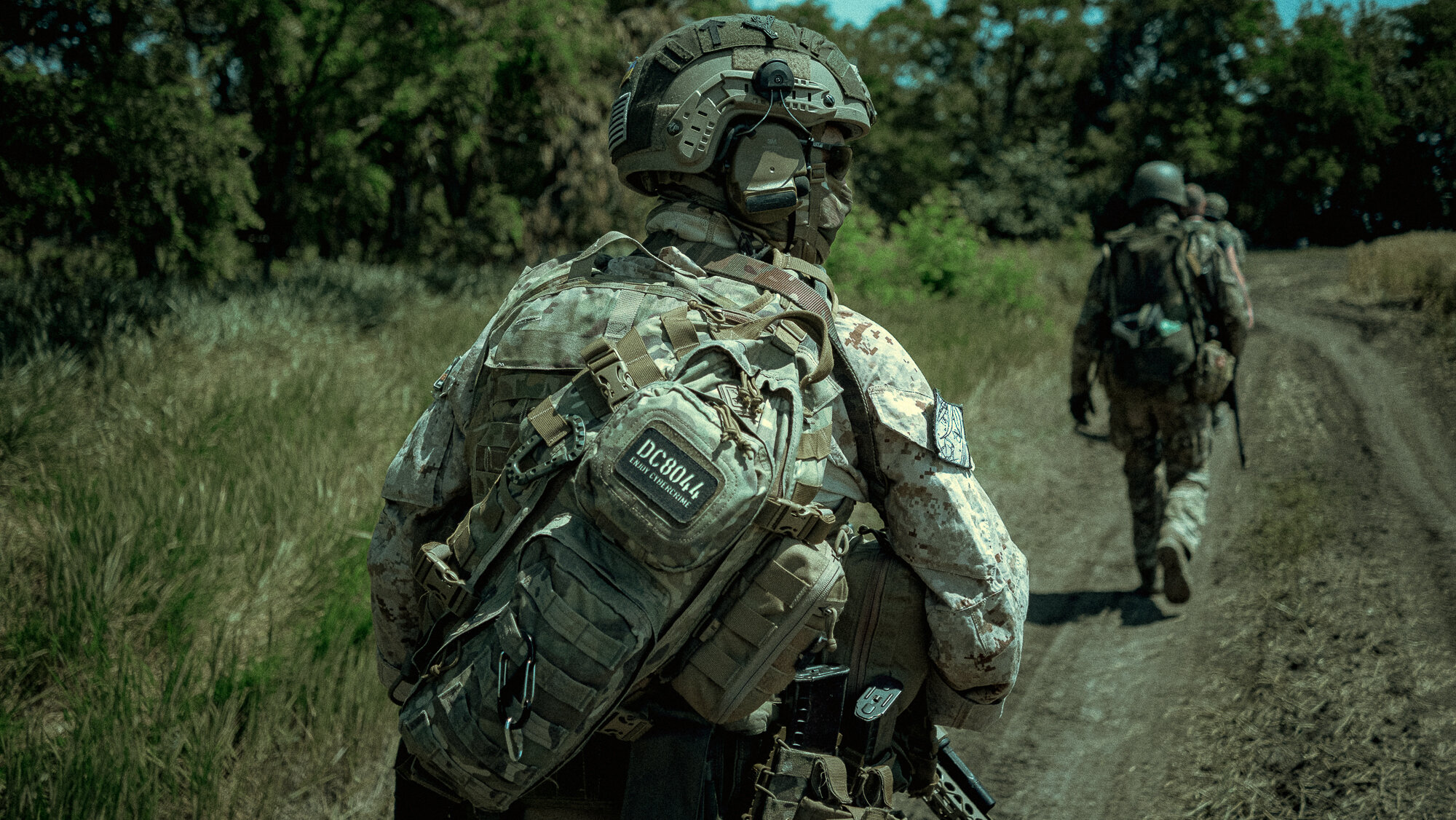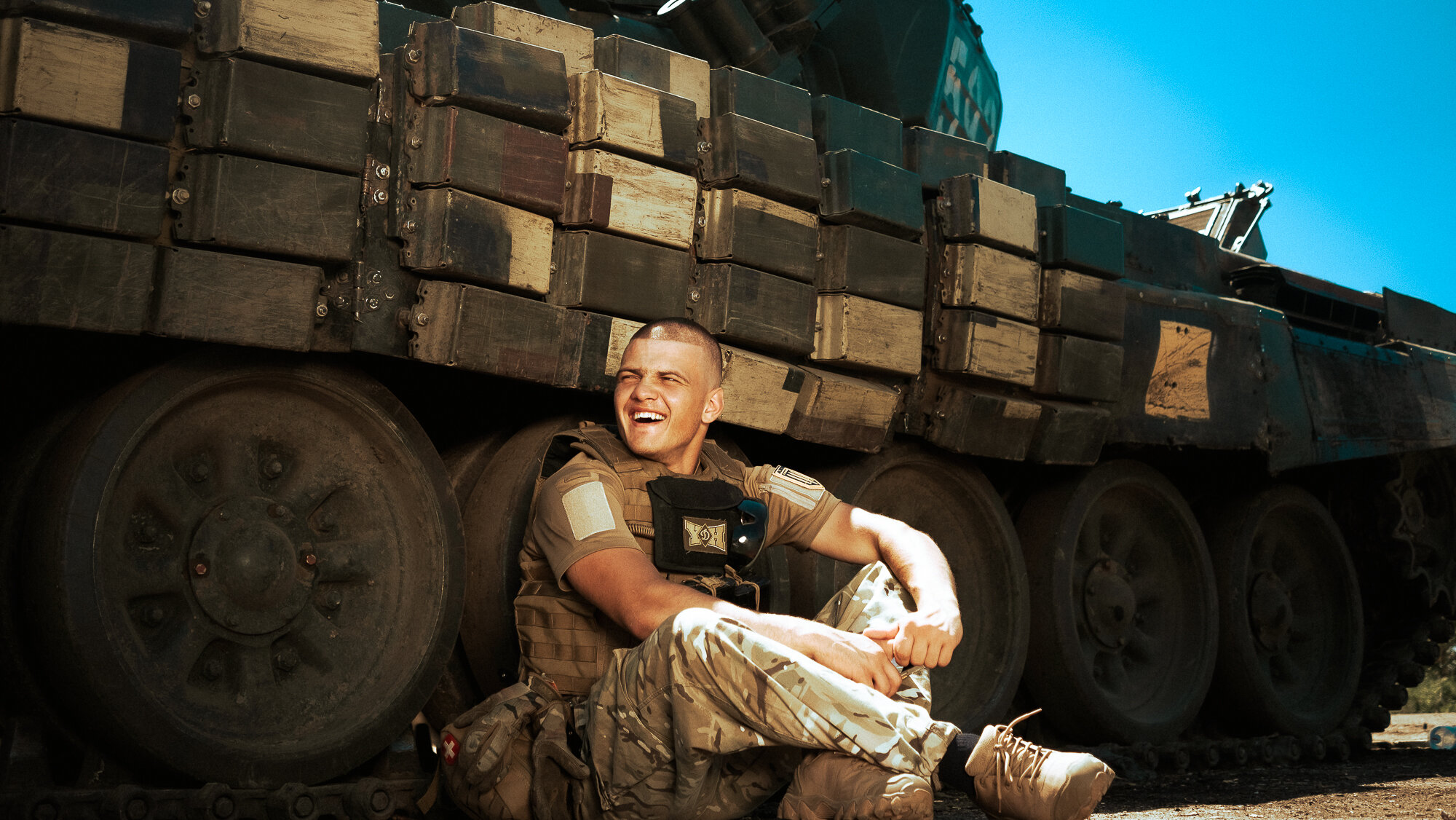The Ukrainian combat unit that Moscow loves to hate the most – the Azov Regiment – is supposed to contain white supremacists and Hitler-lovers, ultra-nationalists and anti-Semites, and, especially, Nazis. Lots of Nazis.
The men and officers of the Azov unit who are at war and fighting the Russian army paint a different picture: average citizens fighting to protect their homes and families, and to keep a police state from taking over their country, with a sum total zero Fascists or swastikas anywhere to be seen.
A Google search of “Azov” and “Fascist” will deliver dozens of hits on articles analyses, at times written up by major media and top-level academics, deeming Azov a deeply-undemocratic Ukrainian nationalist group trading in ethnic hatred.
In late June two Kyiv Post journalists were embedded for three days and two nights with Azov Special Operations Force (Azov SSO), a combat unit raised and recruited in Kyiv in the first week of the war, and currently fighting in the Zaporizhzhia sector.
In dozens of interviews with Azov unit members, both formal and informal, conducted about 60% of the time in Ukrainian 40% of the time in Russian, on the line of contact and off duty back at base, Kyiv Post did not hear a single word of intolerance or observe even a hint of Nazi regalia.
Azov SSO is a unit recruited mostly from around Kyiv after the war started. Most of its members, by their accounts, had nothing to do with Azov before the war started. Some have personal reasons for joining.

N. Korean Troops Massed in Russia to Enter Ukraine War ’Soon’: Pentagon Chief
Andriy Kryvodub, call sign “Ascoli”, is 41. Originally from Chernihiv Region, he moved to Italy in 2007 and by 2022 was living in Italy’s scenic Marche district, in his own home, and earning decent money in food processing. He returned to Ukraine on the second day of the war. His brother’s family was in Chernihiv. When they tried to escape, on the Zhytomyr highway, a Russian soldier shot and killed Kryvodub’s brother. Kryvodub joined the Azov Territorial Defense battalion – at the time, civilians with zero military training but a willingness to fight – and became a grenadier and rifleman.
One of the Regiment’s better-educated fighters, Kryvodub can discuss, with equal fluency, reconnaissance tactics, pasta preparation, and classic Roman building construction. He likes to listen to music to relax. In Azov SSO he is the guy that wears headphones and sings loudly (and not totally in tune) before he goes to sleep.
Others volunteered for Azov SSO because it wasn’t possible to sit, in safety, and let others do the fighting.
Dmytro Kolesnychenko’s call sign is “Hightower”, from a Police Academy movie character best known for his intimidating physical size. Kolesnychenko, 30, has a more or less normal build, so his nom de guerre is probably ironic. He’s from Kyiv and unmarried.
Kolesnychenko spent the first days of the war helping his parents and siblings move from the center of the city to a village far from the capital. Once safely in the countryside, like tens of thousands of other Kyiv exiles, he had little to do but ransack his phone 24/7 for information. He found a Telegram social media channel called Ragnarok recruiting Territorial Defense fighters for Azov. He gathered some like-minded young men also kicking their heels in the village, and joined the battalion. In peacetime, he worked in an office as a project manager. Mostly, he was on a computer. Now he is a combat engineer, and an expert in explosives and demolition.
A few Azov SSO fighters, Kyiv Post found, wound up literally defending their own homes.
Pavlo “Kovalsky”, 27, is from the Kyiv bedroom community of Irpin. He was a supervisor in a Kyiv company before the war started, and fortunately, his parents escaped to Italy before Irpin became a battleground. The day after the Russian invasion he presented himself at the draft board in Irpin, saw a huge line of men waiting to sign up, and was told it would be days or even weeks before he would get a chance to fight. He heard from a friend that the Azov Kyiv group was forming a territorial defense battalion and was looking for fighters. Less than a week later he was a machine gunner fighting the Russian army in defense of his home, almost literally in the neighborhood he grew up. His nickname is “Lemon”.
After four months of war, some Azov fighters have left their civilian lives far in the past, and arguably, without planning it, have become part of history.
Yevhen “Panas”, 27, is married. In peacetime he was a Kyiv bartender, didn’t have much to do with politics, and earned pretty good money. When the Russians invaded his wife decided to stay in the city, and he wasn’t sure whether he would fight or not, but his buddy Pavlo “Lemon” Kovalsky told him about Azov recruiting in the capital, so “Panas” went along.
After joining up “Panas” got picked to be an anti-tank gunner, and Azov gave him quick training in operating the British NLAW missile, and the Swedish Carl Gustav and the American M66 anti-tank rockets.
In early March, most foreign military experts – particularly ones sitting in the Kremlin – doubted that Ukrainian civilians like “Panas” even could dent, never mind stop cold, massive Russian armored columns grinding towards Kyiv. Panas had to learn on the job. He fired a lot of rockets and missiles. Eventually, the Russians went away. “Panas” denies it but, for the rest of his life, he will be one the Ukrainians that picked apart the Kremlin tank assault on Kyiv, and saved the capital. Like most bartenders Panas is easy to talk to but, he says, he’s “a person who whines about the little things”.
No fighting unit would be complete without a member with a backstory worthy of a movie.
“Denys Slivka”, 26, is a bachelor, and hails from Cherkasy Region. In 2015, he left Ukraine and joined the French Foreign Legion. When the war started his family evacuated to Germany. Slivka asked the Legion to release him from service so he could return home and fight. The Legion told him a contract is a contract, so he deserted. Slivka recalled “I could not calmly observe what was happening in my homeland, realizing I could help.”
After four days of travel he found his way to Kyiv, asked friends where an experienced infantryman might sign up to fight Russians, and wound up in the Azov battalion. He’s known as “Ramses” because of his time in Africa. Slivka soon volunteered for one of Azov SSO’s most dangerous jobs – as a scout in the elite reconnaissance section. In late June, while on patrol, the Russians shot him in the leg.
Against the grain of the Foreign Legion stereotype of hard-eyed killers and social outcasts, in Azov SSO, Slivka is known as a friendly a guy who’s always ready to have a chat, loan some kit or help a buddy. A gunshot wound often qualifies a soldier for weeks of leave. Slivka was back in the ranks with the Azov SSO in early July. He had stayed in hospital less than a week.
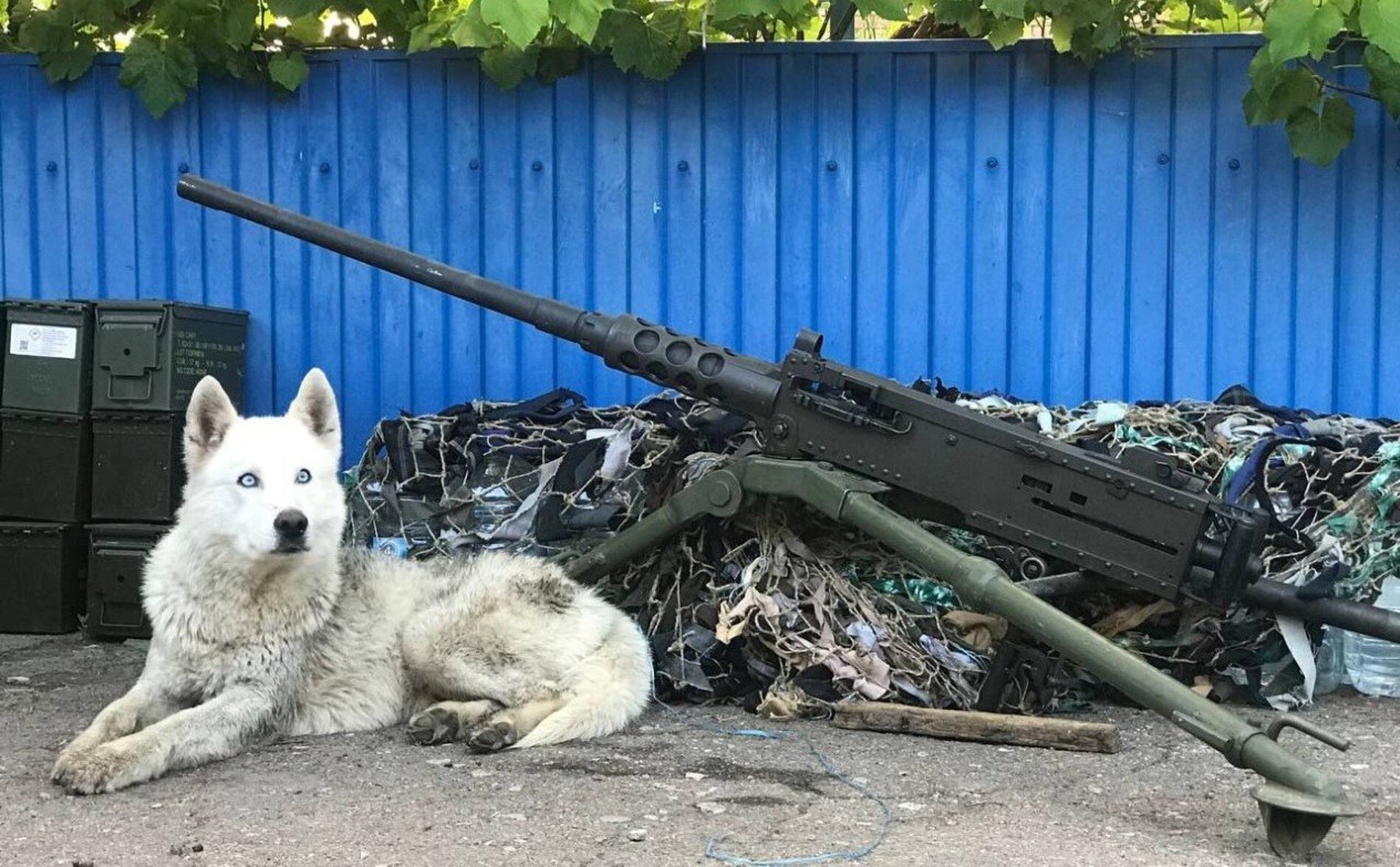
NOTE: Some interview subjects requested their identity be protected and a pseudonym be used for their names and/or surnames. Kyiv Post respected the request. The actual names of the subjects are known to the reporters that worked on this story and to KP editors.
You can also highlight the text and press Ctrl + Enter


